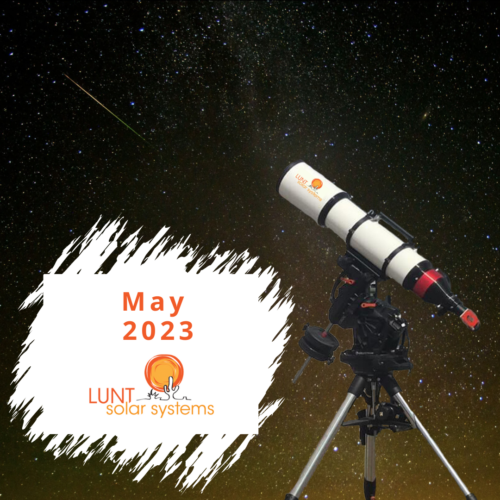
So, while there are always things to view in the night sky, sometimes you have to really look for them. If you don’t, you just might miss them entirely.
First we have the Full Moon on May 4th/5th, also known as the Flower Moon due to the abundance of spring flowers making their appearance. Check the Moon Calculator for the exact time this month’s Full Moon will arrival in your area.
This Full Moon will be blocking out the brightest meteors showering, mainly the Southern Hemisphere, in the ETA Aquarids Meteor Shower peaking on May 5th/6th. The Eta Aquarids is an above average shower, capable of producing up to 60 meteors per hour at its peak. However, you can see some action in the Northern Hemisphere too with up to 30 meteors an hour. The shower is named after the brightest star of the constellation, Eta Aquarii. The Eta Aquarids is one of two meteor showers created by debris from Comet Halley. (Thanks TimeandDate.com) It runs annually from April 19 to May 28. If you plan to view this shower close to when it peaks, head to a dark sky location and be patient. You should still see some good ones!
Don’t think we are done with May 5th, because last and certainly not least is the Penumbral Lunar Eclipse. Did you know that with penumbral lunar eclipses the moon only slightly darkens? It’s so subtle most people miss it entirely. It might look like a slightly darker full moon and that’s about it. The effect is only perceptible to those with very good eyesight or in carefully controlled photographs.
The New Moon happens on May 19th. This is the best time of the month to observe faint objects such as galaxies and star clusters because there is no moonlight to interfere.
Then on May 29th Mercury is at Greatest Western Elongation. This is the best time to view Mercury in the Southern Hemisphere since it will be at its highest point above the horizon in the morning sky. Look for the planet low in the eastern sky just before sunrise.
Check out the entire May Newsletter edition here.
Credit: seasky.org and timeanddate.com